50 Great Reasons To Choose WordPress For Your Business
 Are you thinking about building a new website for your business and don’t know which web building platform or application to choose?
Are you thinking about building a new website for your business and don’t know which web building platform or application to choose?
Here are 50+ great reasons why you should consider choosing WordPress as the ideal platform to power your website or business blog and some of the many benefits it can offer your business.
1 – WordPress is the world’s most popular Content Management System (CMS). WordPress is a proven platform, trusted and used by large companies, small businesses, and millions of websites worldwide.
WordPress powers over one-third of all CMS websites around the world.
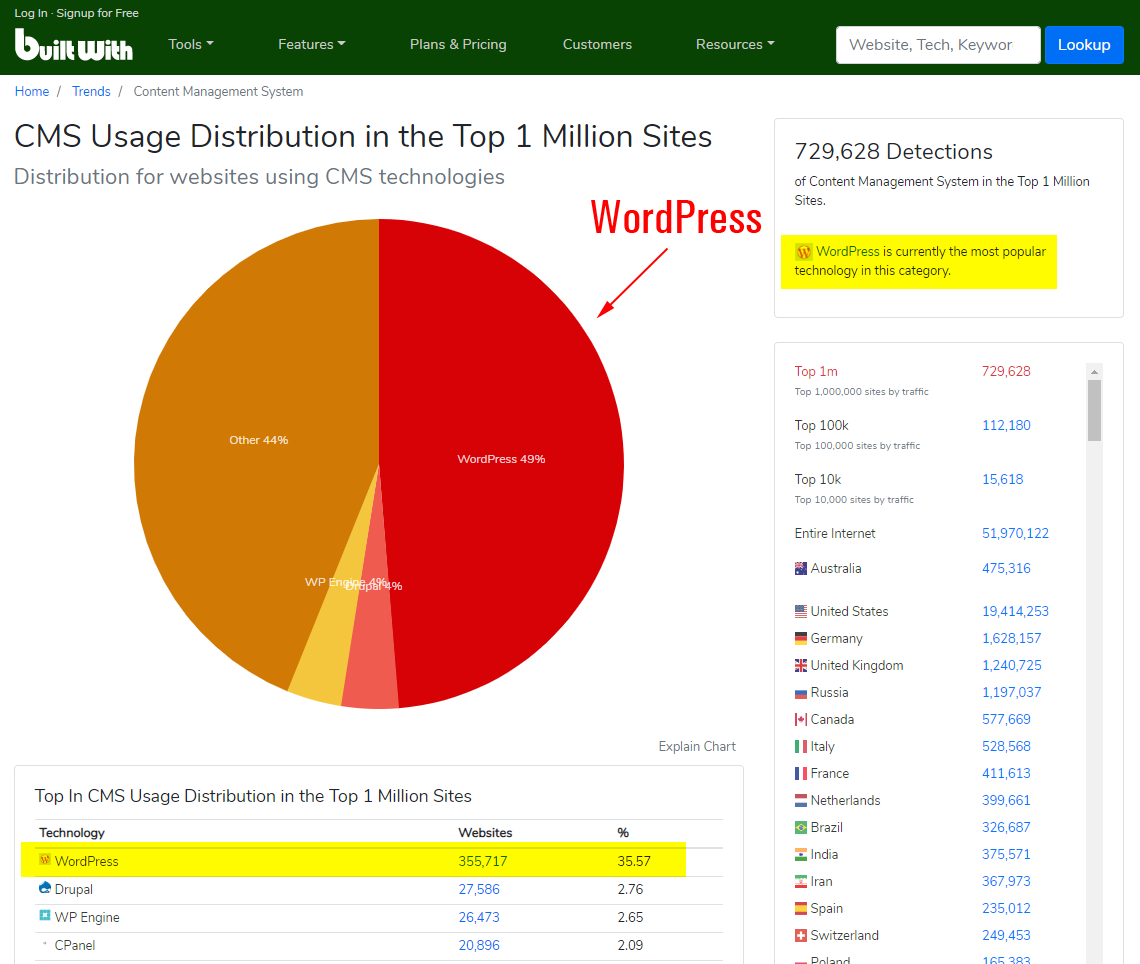
A global community of thousands of web developers and users continually help to improve the WordPress software. New versions are regularly released to improve features and fix bugs and security issues.
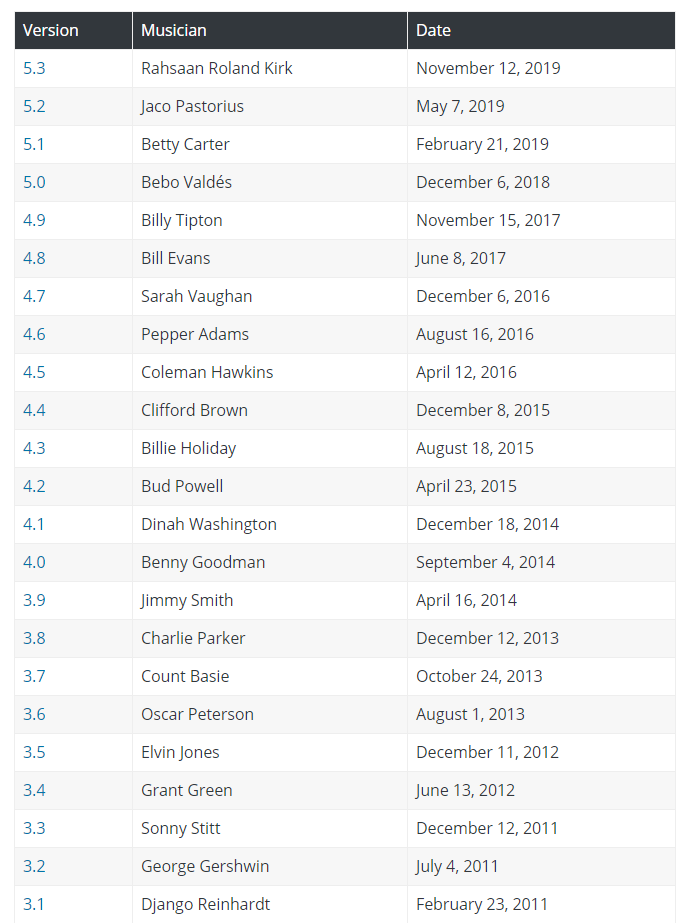
Every new version of WordPress attracts over 30 million downloads.

2 – WordPress is easy to use and requires no coding skills or expert knowledge. If you have ever used Microsoft Word, then the WordPress interface will seem familiar to you. In fact, WordPress itself refers to the ease of use of its application as giving you “the power of Microsoft Word with the intuitiveness of an iPhone.“
3 – WordPress was designed for publishing content online. WordPress is not just a web application. It’s also a powerful content management system and an online publishing platform.
4 – WordPress has features that automate the process of sharing content online and attracting readers and visitors to your site. Some of these features include the ability to:
- Automatically notify other sites, blogs, and social media networks whenever you publish new content on your site
- Optimize your site for search engines, and
- Give your visitors the ability to subscribe to your content via RSS feeds or email.
To learn more automating your traffic generation with WordPress, see our WordPress Traffic Automation Blueprint tutorial series.
5 – WordPress is standards-compliant and provides you with a fast, light, and free content management system that has sensible default settings, intuitive features, and an extremely customizable core.
6 – WordPress typically releases a new version with security updates, bug fixes, and improvements made to the previous version every 3-4 months. WordPress is robust, fully-supported, and it is continually being improved. Typically, WordPress releases a new version every 3-4 months (interesting fact: new WordPress releases are typically named after famous jazz musicians).
7 – WordPress is backed and supported by a growing community of thousands of users, including expert web developers who continually work on improving and refining the platform. This means that bugs, issues, and security vulnerabilities are quickly picked up and addressed when new versions are released.
8 – WordPress can handle your entire publishing workflow. WordPress comes with many built-in features that allow you to collaborate online with other users without sending emails back and forth or using expensive workflow publishing tools.
9 – WordPress has a drag-and-drop media file uploader that lets you effortlessly integrate rich media, images, videos, music, audio, and documents into your content and a media browser that allows you to easily store, organize, and find your files.
10 – WordPress provides a “distraction-free” writing platform, allowing you to focus on your ideas and concentrate on creating your content without getting sidetracked by distracting features like texts, tweets, and status updates.
11 – WordPress automatically saves your work as you type, so you won’t lose any of your content if your computer crashes or if you make a mistake. WordPress also allows you to easily restore previously saved versions of your work with a single click.
To learn more about the WordPress autosave and restore feature, go here: How To Use WordPress Autosave And Post Revisions
12 – With WordPress, you can schedule your content to be published on any given date and time you specify. This gives you full control over your publishing timeline and schedule.
To learn more about scheduling WordPress posts, go here: How To Schedule Posts In WordPress
13 – WordPress lets you publish anywhere and everywhere with mobile applications for Android, iOS, and even by email.
To learn more about using the WordPress mobile app, go here: How To Use The WordPress Mobile App
14 – WordPress provides strong password protection for your site and content. You can protect individual posts or just parts of your content from public viewing, or even make your content completely private and accessible only to individual authors, members, or registered users with specially assigned roles or privileges.
To learn more about protecting your content in WordPress, go here: How To Protect Your Content In WordPress Posts & Pages
15 – WordPress lets you split long content into multi-paged posts for easier reading.
To learn more about splitting long content in WordPress, go here: How To Split Long Posts Into Multiple Pages In WordPress
16 – WordPress lets you save your content as a draft. This lets you save unfinished articles or posts that you are working on without publishing them (i.e. without making them visible to the public), then come back and improve or rework your saved drafts later and only publish these when you’re ready to publish.
17 – WordPress lets you preview your posts “live” just as they will appear when published, without requiring you to publish your content first. This allows you to get your content looking exactly how you want it to look before actually making your content go live.
18 – The WordPress content publishing platform is designed to make your site conform to your content, not the other way around. This is done using a powerful feature of WordPress called a Theme. Themes allow you to quickly and easily change the entire design of your website with a few mouse clicks without affecting the content. WordPress Themes allow you to instantly change the look and feel of your entire website as often as you like.
19 – WordPress lets you organize your content by day, month, year, author, tag, or category. WordPress also creates browsable archives dynamically to display your past content and provides a number of features to help keep everything looking up to date. Regardless of how much content you have on your site, you can keep it all organized and easy for your site visitors to find.
20 – WordPress has a powerful built-in search function that lets your site visitors quickly find the content they’re looking for. WordPress is also flexible when it comes to giving website owners search functionality. You can use the WordPress built-in search box or choose to use an external search engine like Google Search instead.
21 – WordPress has a built-in feature that automatically converts your new posts and pages URLs into human and search engine friendly URLs. This feature (called ‘Permalinks’) helps your site users and search engines easily understand what your content is about.
22 – WordPress automatically typesets every letter you write. WordPress works seamlessly in the background while you work on your content to give your posts and pages seamless typography. WordPress also intelligently converts web-unfriendly characters like quotes, apostrophes, ellipses, em and en dashes, multiplication symbols, and ampersands into typographically correct HTML entities.
23 – WordPress has been translated into many different languages. You can create a site that is localized for a specific international audience and delivered in the language of your choice.
24 – WordPress uses powerful “drag and drop” features to help you administer and fully customize just about every aspect of your site – from site menus to site layout and dynamic functionality on individual pages.
25 – WordPress lets you assign multiple users on your site and define different roles and privileges for each of your users. You can also configure your site to let users register themselves and either publish content on your site or require content to be submitted for review and approval by the site administrator or other users before publishing.
26 – WordPress provides extensive functionality by default and can be used right out-of-the-box. With WordPress, you don’t have to reinvent the wheel. With a little customization, however, you can truly unlock the power of WordPress and create a unique online vehicle adapted to your specific needs.
27 – WordPress source code is open and transparent. WordPress makes its code freely available. This means that anyone can take the code apart, use it to build new applications, and improve any existing feature in the software. Add to this the fact that WordPress is built by a dedicated community of professional developers, academics, and enthusiasts, and you have a powerful online publishing platform with a rapid development cycle, frequent updates, software that is always up-to-date, no licensing fees or direct costs, and ongoing support from an international community of professional developers.
28 – Unlike many other publishing platforms, WordPress does not lock you into using proprietary data formats. WordPress believes that you should do what you want with your data and relies on open standards that enable you to take your data with you. WordPress even makes available tools that allow you to seamlessly import data from other popular blogging platforms.
29 – WordPress offers users a fully hosted option, as well as the option to run WordPress on your own domain. If you are planning to run a commercial website or blog, we recommend hosting WordPress on your own domain, as this gives you the most amount of freedom and flexibility. WordPress was designed to be installed on your own web server, in the cloud, or on a shared hosting account. You can even install WordPress on your personal computer, or on a corporate intranet. Wherever you choose to install it, you have complete control and are able to access and modify everything on your site. However, if you want the hosted version of WordPress, then check out WordPress.com.
30 – WordPress offers multisite technology. This technology allows you to control one or thousands of WordPress sites from one administration panel and is currently used to power over 20 million sites on WordPress.com and global sites like CNN and the New York Times, as well as individual sites in networks, organizations, and universities. Multisite technology allows each individual user to have full administrative control over their own site without any security concerns. Each site can also have its own design (theme), individual functionality (using plugins), and manage its own users. Super administrators can implement network-wide policies and deploy security, plugin, and theme updates at the click of a button from one central location.
31 – WordPress updates content seen by your site users fast. WordPress uses dynamic page generation technology to generate page requests by viewers on your site directly from your database and templates. This uses minimal server storage space and makes updating your site and your site’s design elements extremely fast.
32 – WordPress uses templates to generate your site’s pages dynamically. You can fully control how your content is presented, simply by editing your site’s templates (or hiring someone with basic knowledge of PHP coding to do this for you.)
33 – With WordPress, you don’t have to mess at all with design templates if you don’t want to. You can just browse thousands of ready-made premium quality WordPress themes from professional design companies that already have the look and feel you have envisioned for your website (most premium themes offer built-in features that allow you to further customize your theme) and purchase themes for just a few dollars (most premium themes cost anywhere between $10 – $100 or less).
To learn where to find the best themes for WordPress, go here: Where To Find WordPress Themes
34 – WordPress software is stable, secure, and robust. Because WordPress has such a wide user base numbering in the millions and a dedicated open-source community, vulnerabilities are discovered quickly and patches are developed and often released by a dedicated security team within hours of being reported. WordPress has an integrated core update system, which means that patches are deployed at the click of a mouse button. Additionally, WordPress sanitizes all user input, restricts URL access, has an extensive user permission system, and never stores passwords in an unencryptable format.
Because WordPress offers a hosted option (at WordPress.com) it uses the site’s millions of users as beta testers before releasing a new version, so when new versions are released, users can be confident that the new version is quite stable.
To learn more about WordPress Security, see this tutorial: WordPress Security Explained
35 – WordPress is highly flexible and adaptable. The WordPress core application allows developers to quickly and effectively modify and customize the application to suit their unique needs and integrate WordPress seamlessly with other third-party technologies.
36 – WordPress is “enterprise-ready.” WordPress has already been adapted to perform in various enterprise environments. It provides support for a number of enterprise-centric features such as Active Directory authentication, user management, workflow integration, scheduled backups, and more!
37 – WordPress allows you to connect with other systems. WordPress allows different systems in different environments to talk to one another. You can also use clients designed for other platforms.
38 – WordPress makes installing, upgrading, and maintaining the software simple and easy. WordPress automatically notifies you when there are new updates to the software, plugins, and themes. Updates can be performed manually with a click of the mouse or set to update automatically.
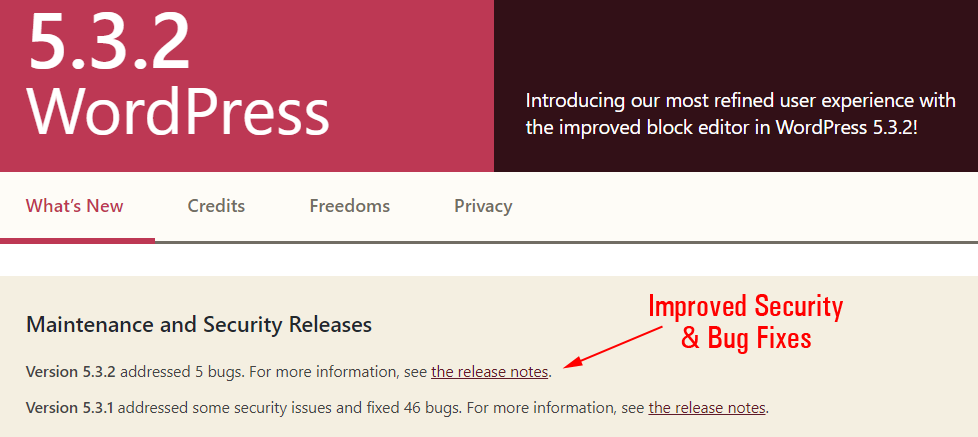
39 – WordPress lets you specify which HTML tags users are allowed to add when posting content on your site. WordPress also provides you with a built-in default list of safe HTML tags users can add in their comments and posts so that the safety of your data or server is not compromised by malicious users.
40 – WordPress code is fully compliant with the standards of the W3C. The World Wide Web Consortium (W3C) is an international community that develops open standards to ensure the long-term growth of the Web. Being standards-compliant is important not only for interoperability with current internet browsers but it also ensures forward compatibility with future tools and technologies.
41 – WordPress is so much more than just a blogging tool. WordPress is the most widely distributed content management system (CMS) technology in the world today and is used to power millions of commercially driven websites. This means that many of the websites you are visiting right now are probably being powered by WordPress. With WordPress, the distinction between a “blog” and a “website” is becoming increasingly blurred.
42 – WordPress makes it easy for users to subscribe to your content using RSS feeds. RSS stands for Really Simple Syndication and WordPress fully supports protocols such as RSS 1.0 (RDF), RSS 2.0, and ATOM specifications. Almost every page on your site has an associated feed that your readers can subscribe to (e.g. latest posts, categories, comments, etc.). WordPress also allows you to add content such as podcasts and videos to your feeds.
To learn more about WordPress RSS, see the tutorial below: Beginner’s Guide To Using WordPress RSS
43 – WordPress can give your site maximum exposure online and get your content indexed by search engines automatically. WordPress comes with two ways of automatically connecting your site to other sites (and enabling other sites to do the same to your site), called PingBack and TrackBack. You can also configure your WordPress site to automatically notify blog directories about your new content using the PingBack function.
Check out our article series on automating WordPress traffic here: WordPress Traffic Automation Blueprint – Part 1
44 – WordPress promotes interactive engagement and community-building on your site. Visitors can interact and engage with your site through the use of built-in features like comments, trackbacks, and pingbacks. Visitors can leave comments on individual entries on your site, and you can then reply to their comments. You can also delete inappropriate comments and enable or disable comments on a per-post basis.
45 – WordPress helps you manage and eliminate comment spam on your site. WordPress comes with default tools to help you fight spam. You can control spam using plugins and by moderating your “comments” settings. For example, you can moderate all comments before they appear on your site, block comments with specific words in them, block comments posted from specific IP addresses, and block comments containing more than a number of specified links.
To learn more about managing comments in WordPress, see this tutorial: How To Manage WordPress Comments
46 – WordPress can send out automatic notifications. WordPress notifies you via email each time there is a new comment or a comment awaiting moderation.
47 – WordPress uses shortcodes. Shortcodes are simple commands (e.g. [shortcode]) that you can insert into your posts and pages which adds scripts and functionality to your site without any need to learn how to add or edit code.
48 – WordPress has a built-in configurable user registration system that lets people register on your site, manage their profiles, and post comments. You decide whether registered users can leave authenticated comments on your site, close comments to non-registered users, etc.. Additionally, there are plugins you can add to your site that will only display content to specific types of users (e.g. users registered in different levels of a membership site).
49 – WordPress development is guided by a set of unwavering principles. These principles include being able to work right out of the box, designing for the majority (but being mindful of the vocal minority), striving for simplicity, and keeping the code clean, lean, and mean, among other things. To learn more about these principles, go here: WordPress Philosophy
50 – WordPress provides users with access to more than 55,000 free open-source plugins and thousands of free themes. The WordPress plugin and theme library are constantly growing. With plugins and themes, you can add every kind of functionality you can imagine to your website and make your site design look as unique as you want it to be.
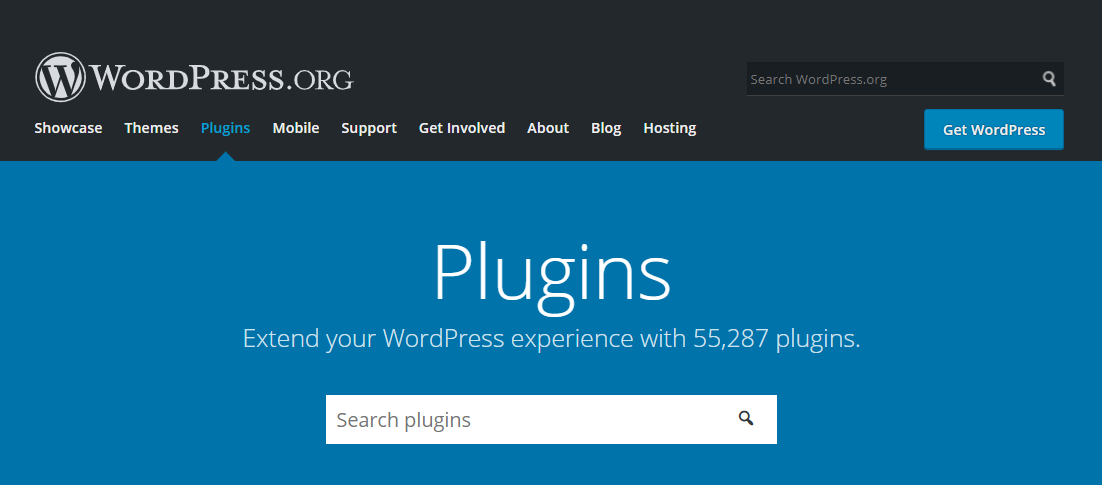
51 – WordPress is 100% free to download and use. You can install WordPress on unlimited domains and use, extend, or modify WordPress however you choose. You can also use it commercially without licensing fees, restrictions, or having to display third-party advertising. WordPress is “free” not just in terms of price, but also in terms of how much control you have when using it. You have complete freedom to run the program for any purpose, the freedom to study how the program works and to change it to make it do whatever you wish, the freedom to redistribute the application, and the freedom to distribute copies of your modified versions to others.
Learn why WordPress is Free and what costs are involved in using a WordPress-powered site here:
52 – WordPress is mobile responsive and works on every kind of device. However you choose to consume information, WordPress lets you work with every kind of device – Smartphone, tablet, notebook, desktop, etc.
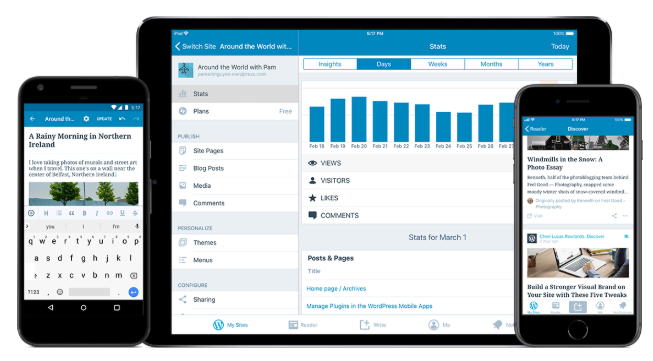
53 – Admin color schemes to suit your personality. WordPress lets users choose color schemes for their administration area, so they can work in a colorful environment that suits their personal taste.

With WordPress, you can literally build anything you can imagine. Doesn’t it make sense, then, to consider using WordPress to power your web site or blog and start growing your business online using the most powerful, flexible, scalable, and easy to use web platform and content management system available?
To learn more about the benefits of using WordPress, check out this article: Benefits Of Using WordPress As A Content Management System (CMS)
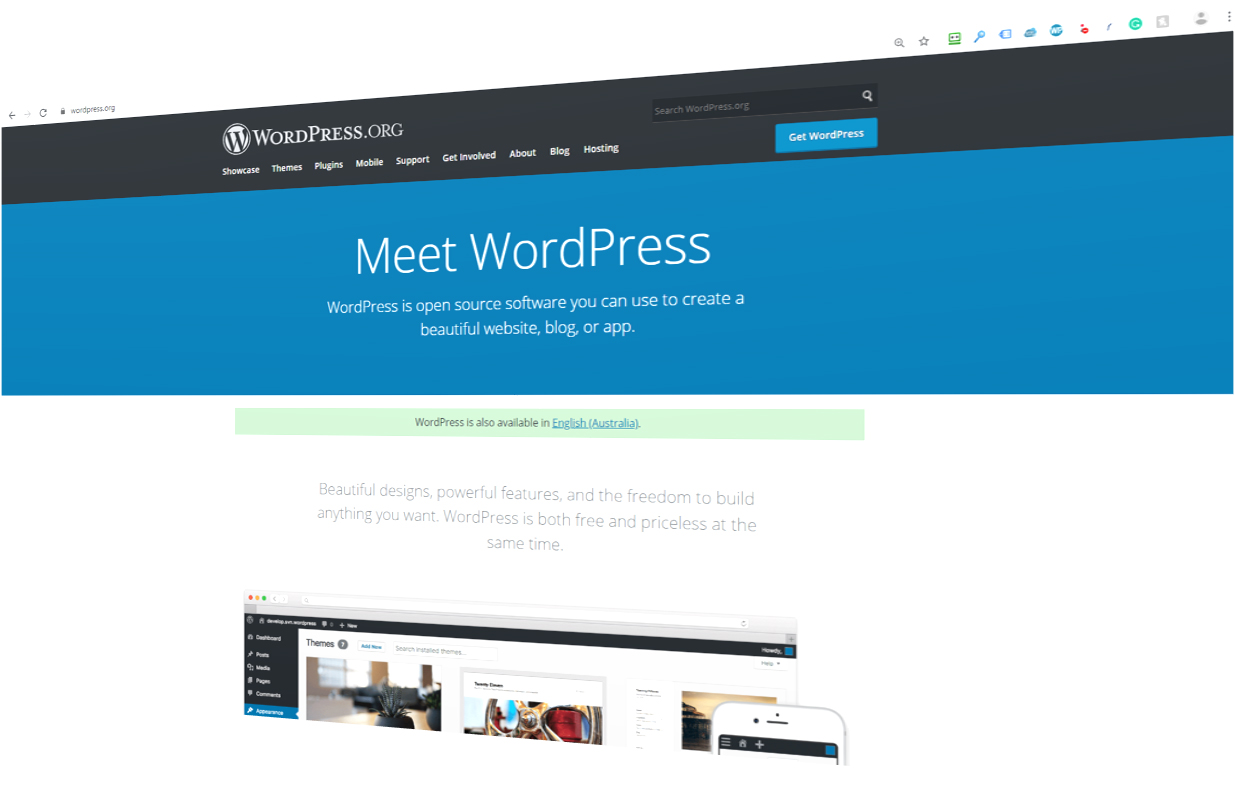
Stock image: Pixabay
***
"Wow! I never knew there's so much to learn about WordPress! I bought one of the WordPress for Dummies three years ago, such authors need to be on this course!" - Rich Law, Create A Blog Now
We are not affiliated, associated, sponsored, or endorsed by WordPress or its parent company Automattic. This site contains affiliate links to products. We may receive a commission for purchases made through these links.

